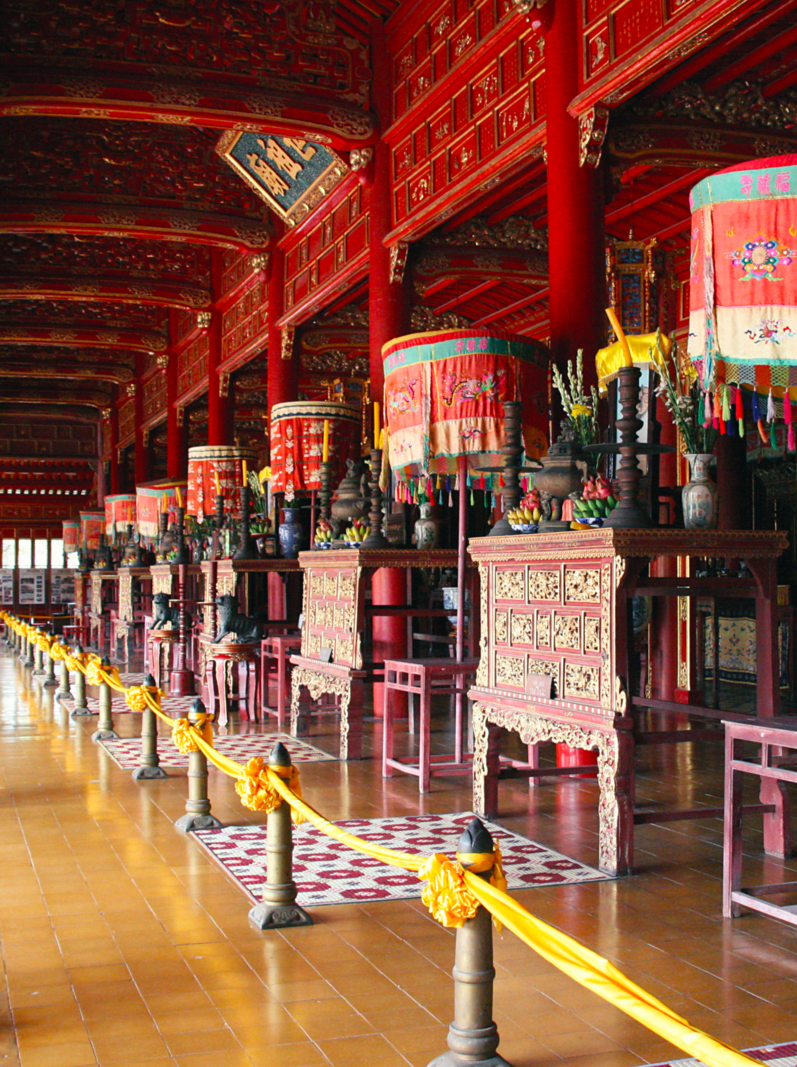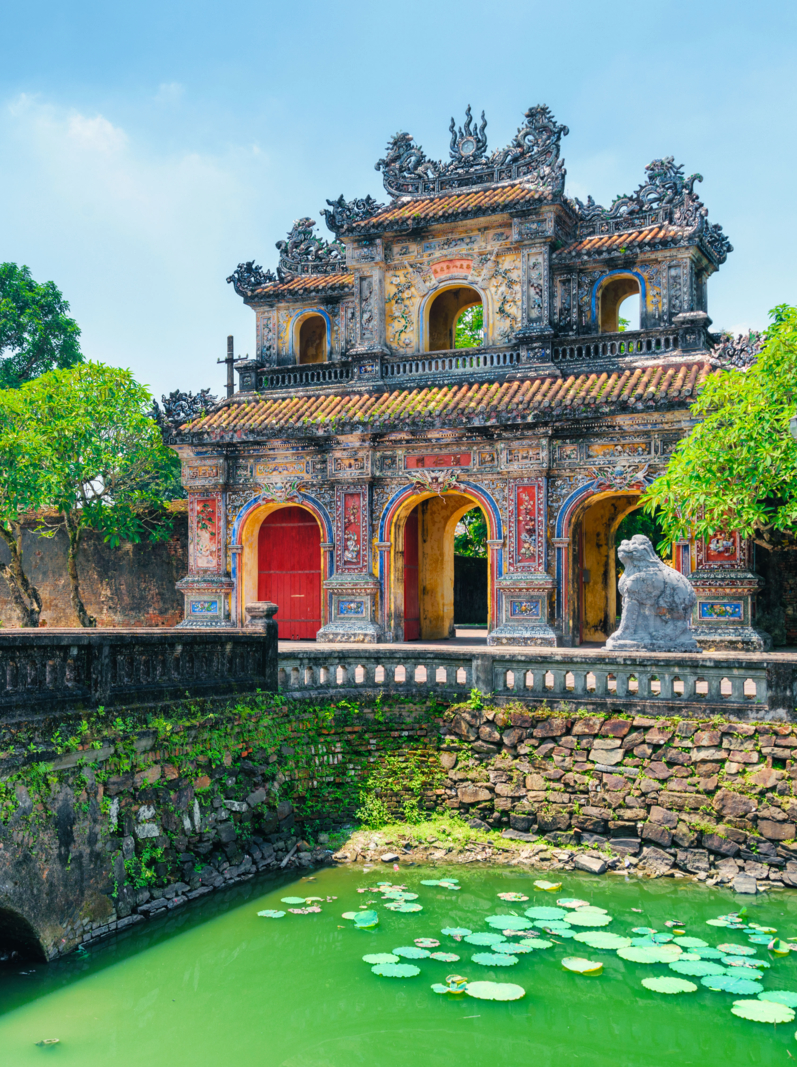





In Hue, you can see evidence of the city's rich past in its buildings. This history has also left its mark throughout the surrounding province. An essential stopover during your visit to Hue is the Imperial City, the residence of the lords of the Nguyen dynasty, extending over several miles. Exploring the different parts of the Imperial City, such as the Forbidden Purple City and the Citadel, allows you to gain a better appreciation of this massive architectural complex.
You can also go outside the walls to admire what remains of the imperial dynasties, such as the tomb of King Minh Mang, the mausoleum of Emperor Tu Duc or the impressive pagoda of the Celestial Lady, Vietnam's tallest pagoda. This pagoda overlooks the Perfume River, which supplies water to the lush orchards around Hué. If you want to try the local food, the Thuy Bieu eco-village is the best place to taste the fruits grown along the river.
The local craftsmanship is as rich as the history of Hue. We recommend taking a bike ride through the villages that dot the banks of the river where you can visit factories that make traditional items. Observe the region's skills and expertise by visiting Thanh Tiên, where paper flowers are made, and Phu Cam, where the famous conical hats are sewn.